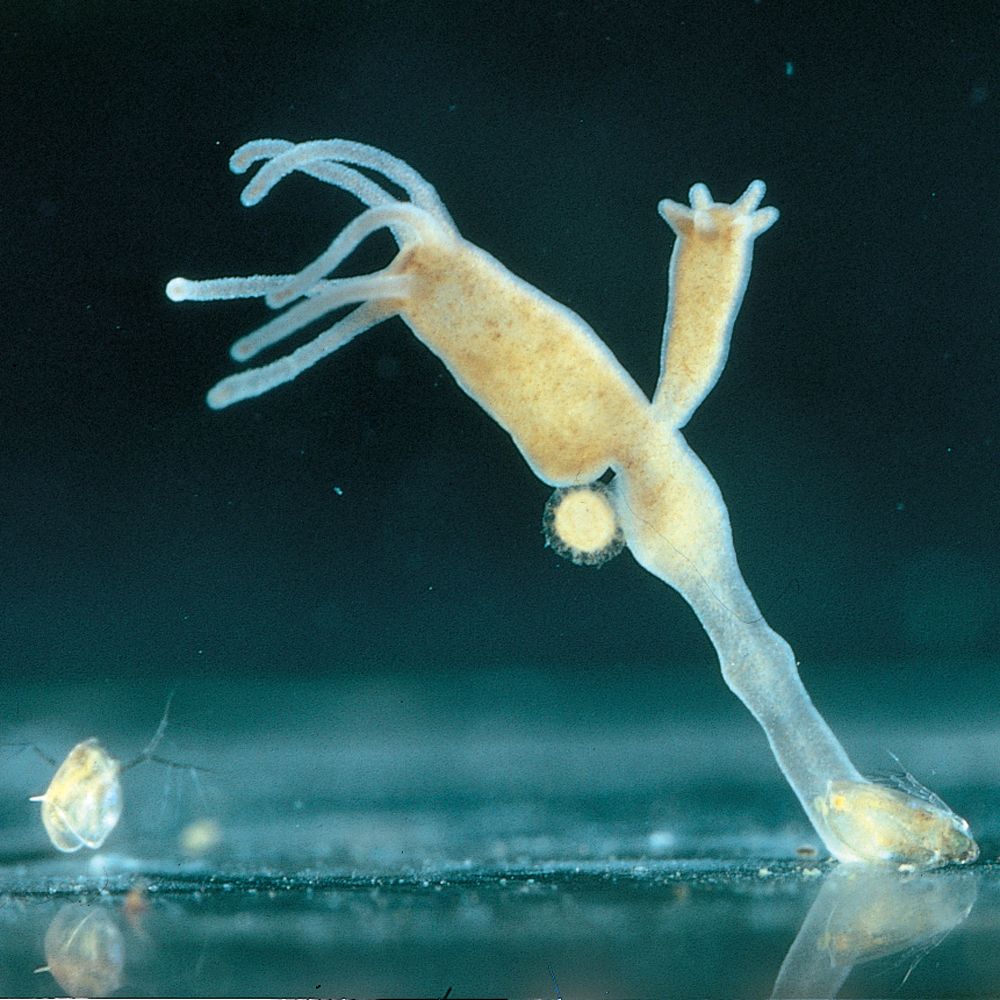My Cart
Your Shopping Cart is currently empty. Use Quick Order or Search to quickly add items to your order!

In this lab students compare the body structure and functions of three invertebrates to that of a vertebrate. They use their data to construct a cladogram.
Hydra, Planaria, and Daphnia Review Set (132590)
stereomicroscopes or hand lenses
Optional Materials
Instead of the Deep-Well Slides, Concavity Slides (632250) and coverslips may be used with Hydra and Daphnia, and petri dishes may be used with planarians. A compound microscope with a scanning lens (for 40× viewing) may be substituted for a stereomicroscope, especially in conjunction with a hand lens.
The following prepared microscope slides would further inform student observations: Hydra, l.s. (306052) and Planaria, w.m. (306318).
Ensure that students understand and adhere to safe laboratory practices when performing any activity in the classroom or lab. Demonstrate the protocol for correctly using the instruments and materials necessary to complete the activities, and emphasize the importance of proper usage. Use personal protective equipment such as safety glasses or goggles, gloves, and aprons when appropriate. Model proper laboratory safety practices for your students and require them to adhere to all laboratory safety rules.
Cultures remaining after the completion of the activities may be added to a classroom aquarium. Otherwise, you may dispose of them down a sink, followed with tap water. The chlorine and chloramine in most tap water will kill the organisms. If your tap water is not chlorinated, pipet 1 mL of household bleach (sodium hypochlorite solution) or isopropanol (rubbing alcohol) into the culture and wait 15 minutes before flushing down the sink.
Students may work individually or in pairs. Print copies of the four anatomy sheets included. For each culture, set up a workstation that includes the following:
live culture
dropping pipet
Deep-Well Slides
copies of these anatomy sheets:
Hydrozoa Anatomy
Planarian Anatomy: Nervous and Reproductive Systems
Planarian Anatomy: Digestive and Excretory Systems
Daphnia Anatomy
Optional: If your students are not familiar with radial and bilateral symmetry, it may be helpful to perform the activities in two other LabSheets, Introduction to Hydra and Introduction to Planaria, before beginning this LabSheet.
Data Table 1
| Body Function | Organs, Tissues, or Cells | Rat | Hydra | Planarian | Daphnia |
| Nervous | Brain or Ganglion | × | × | × | |
| Nerves | × | × | × | ||
| Nerve Cells | × | × | × | × | |
| Sense Organs | × | × | × | ||
| Circulation | Heart | × | × | ||
| Blood Vessels | × | ||||
| Digestive Tract | 1 Opening | × | × | ||
| 2 Openings | × | × | |||
| Excretion | Kidney | × | |||
| Flame Cells (Nephridia) | × | × | X* | ||
| Respiration | Lung or Gill | × | |||
| Diffusion through Epidermis | × | × | X* | ||
| Skeleton | Exoskeleton | × | |||
| Endoskeleton | × | ||||
| Locomotion | Jointed Appendages | × | × | ||
| Symmetry | Radial | × | |||
| Bilaterial | × | × | × |
* May be left blank as this is not shown on the sheet and cannot be answered by students’ observation of the animal.
Data Table 2 (Answers will vary)
| Trait | Rat | Hydra | Planarian | Daphnia |
| Nerve Cells | 0 | 0 | 0 | 0 |
| Symmetry | 1 | 0 | 1 | 1 |
| Heart | 1 | 0 | 0 | 1 |
| Endoskeleton | 1 | 0 | 0 | 0 |